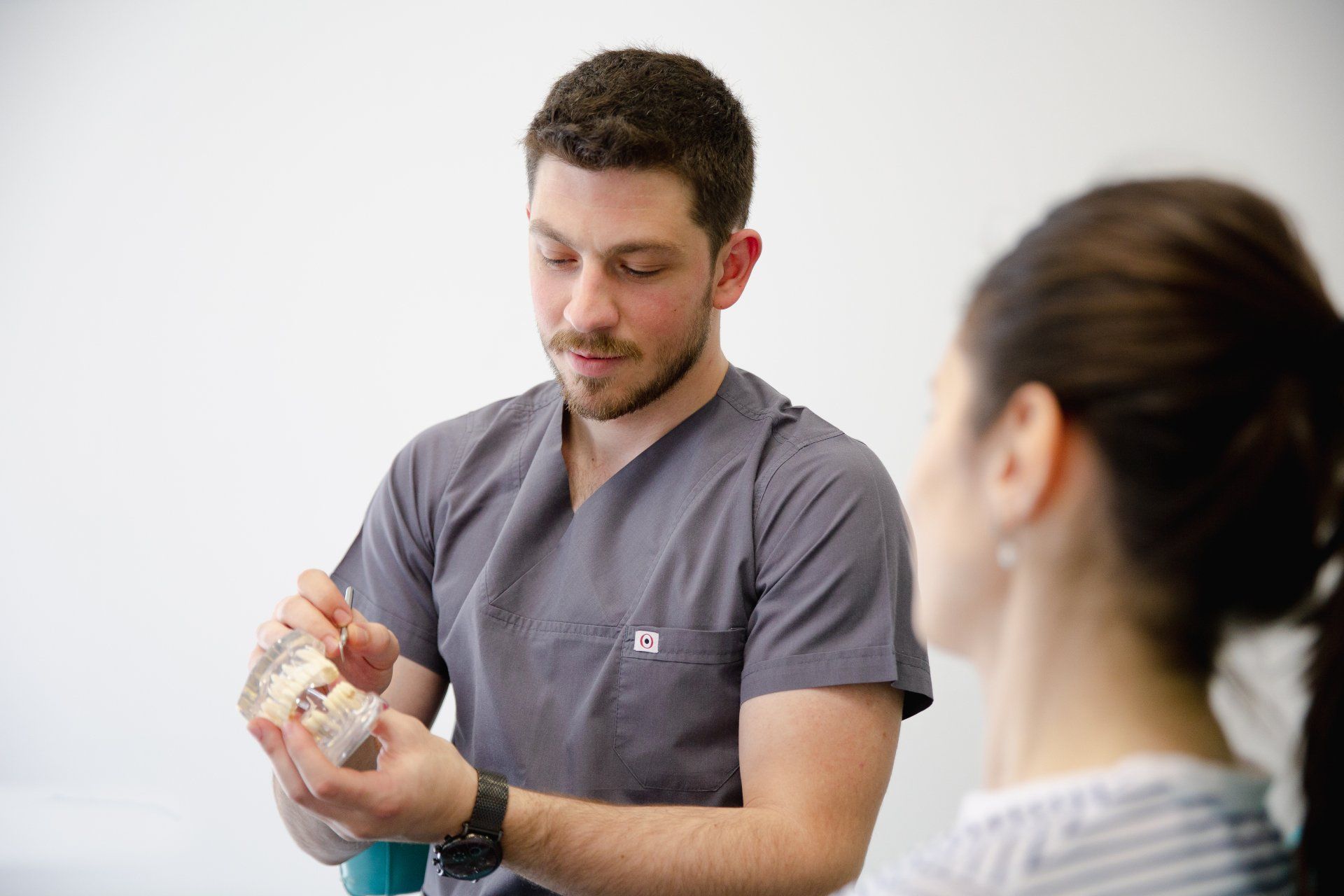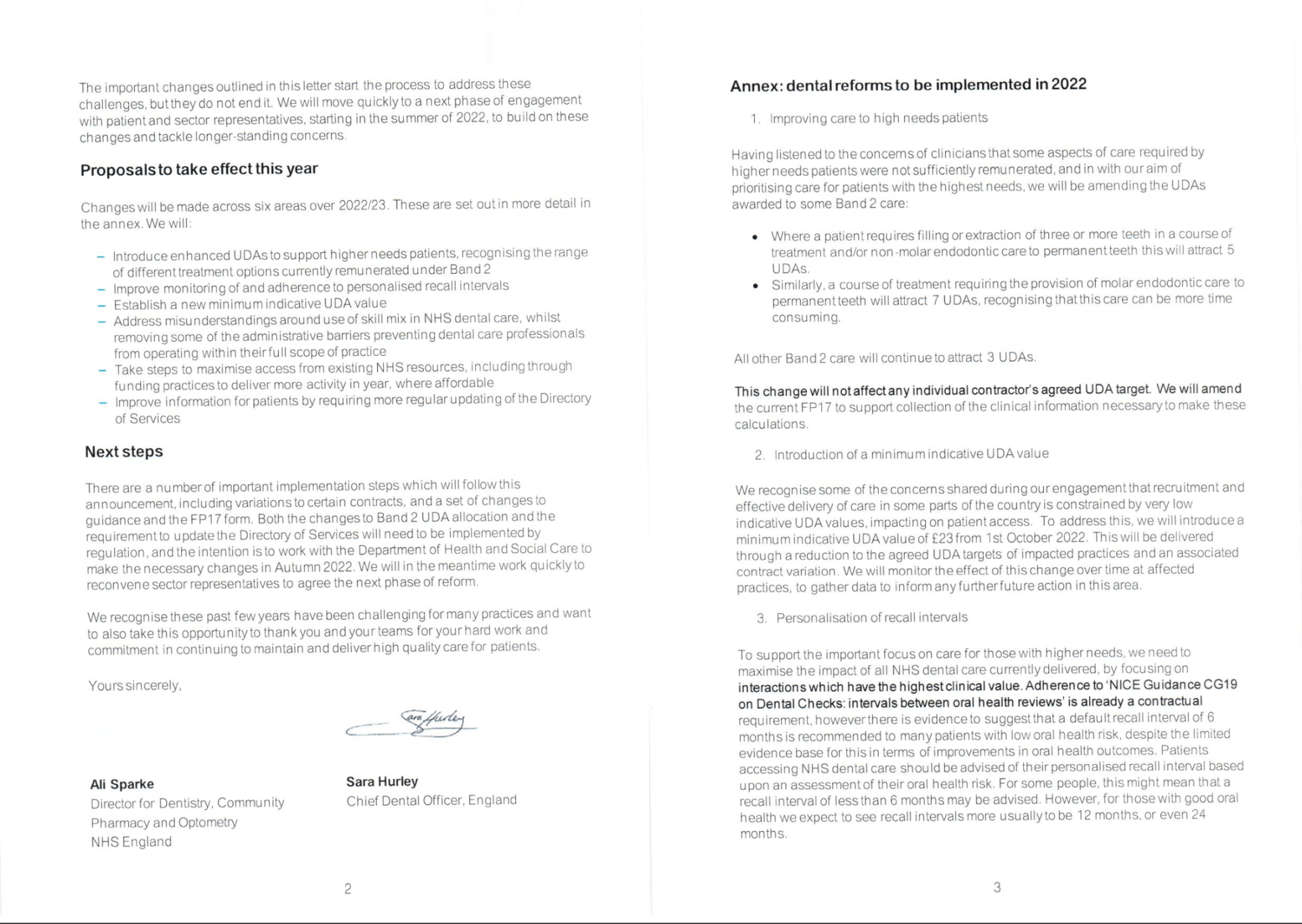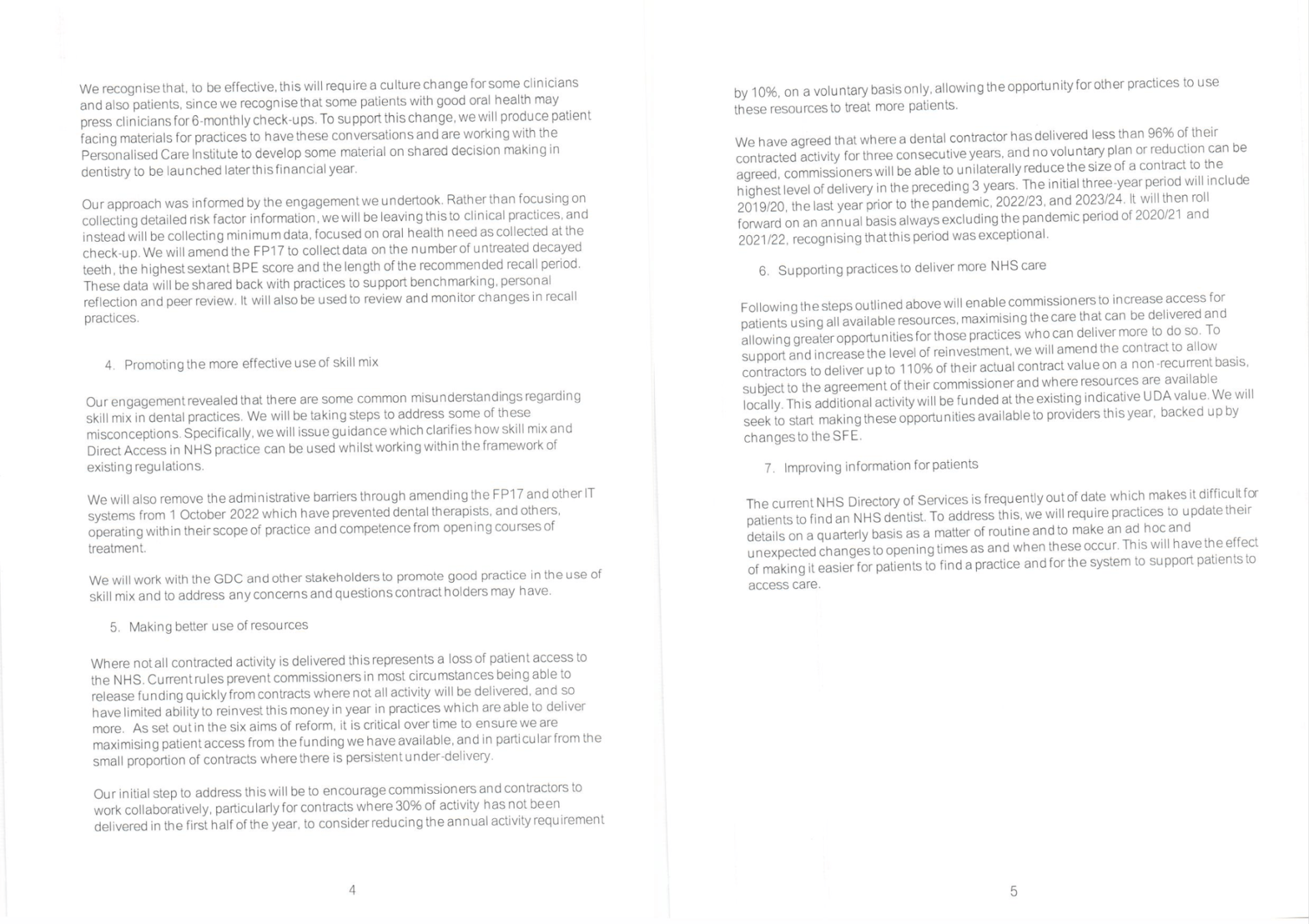Dental Contract Reform

Yesterday marked what appeared to be the first attempt to change the way in which NHS dentistry operates in England, since April 2006. The Chief Dental Officer, Sara Hurley has outlined a package of reform, the intention of which is to make it easier for patients to access NHS care and to allow practitioners to allot more time to those of their patients in need of complex dental treatment.
Reform was promised in 2013 and 9 years has passed since then without the mechanism of NHS dentistry being substantially changed. Pilot and prototype contracts have come and gone and perhaps it is only the drastic need for a change to the current system as a result of the pandemic, that has prompted a call to action.
The need for the profession to be supported, for oral health outcomes to be addressed, for NHS dentists to be able to undertake proactive dentistry rather than just reacting to the number of UDAs that they are expected to achieve and to ensure that patients have access to NHS care where it is appropriate are issues that have been in need of attention for some time.
It is perhaps merely a coincidence that these changes have been proposed just as we return to 100% contract activity, this having been slashed as low as 20% in April 2020 and over the course of the last two years, gradually reverted back to pre-pandemic levels.
The events of the last 2 years have not been lost on practitioners and perhaps the CDO is hoping that these proposals, if already far too delayed, might give some comfort to those NHS dentists who were considering moving into the private sector or leaving dentistry completely.
The devil as always, is in the detail and the attached letter from the CDO to the profession outlines the proposals in full.
The intention is to introduce enhanced UDAs to recognise the range of Band 2 treatments; to establish a new minimum UDA value across the whole of the NHS; to enable DCPs to operate using their full skills rather than with the present restrictions; to maximise access to NHS dentistry and to ensure that patients receive the regularity of examinations that their oral health requires.
Implementation is proposed this Autumn.
We can only wait with baited breath to see if that becomes a reality. Past experience would suggest that promises made do not materialise.
NHS dentistry cannot afford for there to be any more delays and whether the measures provide the "root and branch" change that needs to be delivered remains to be seen.










